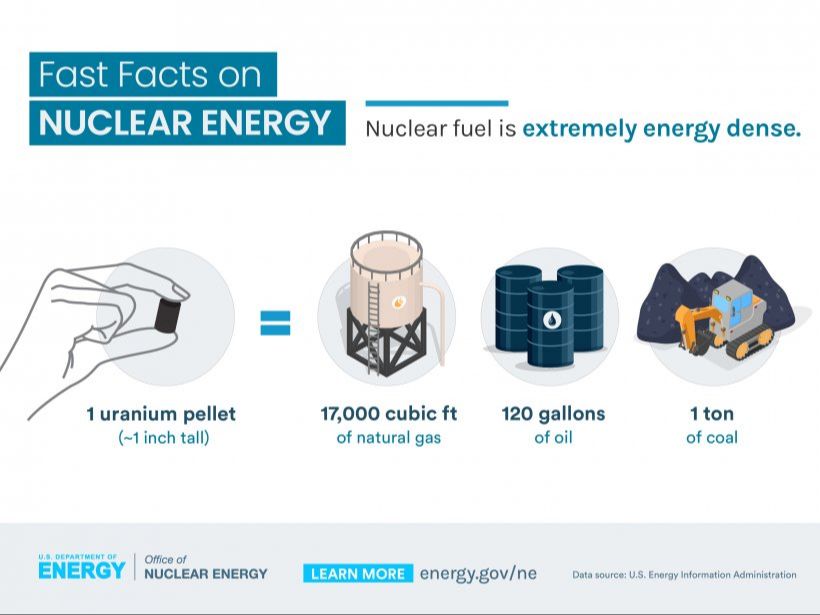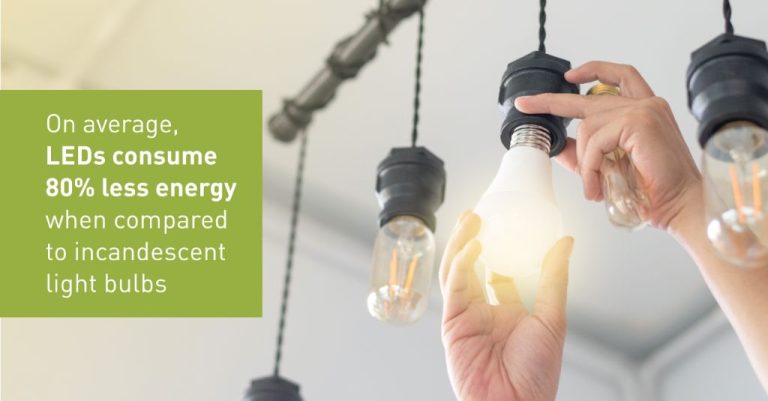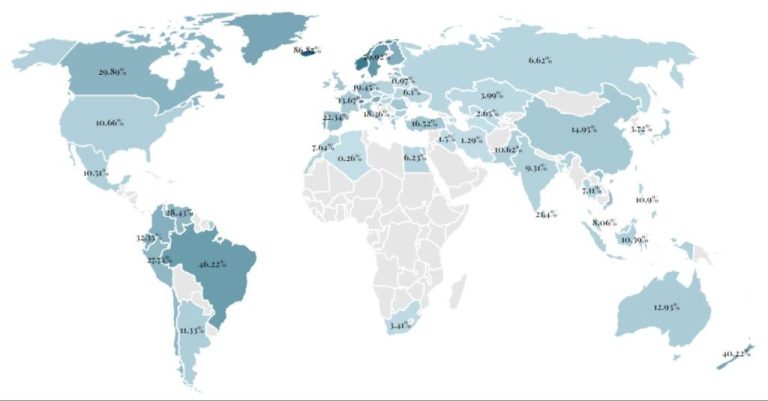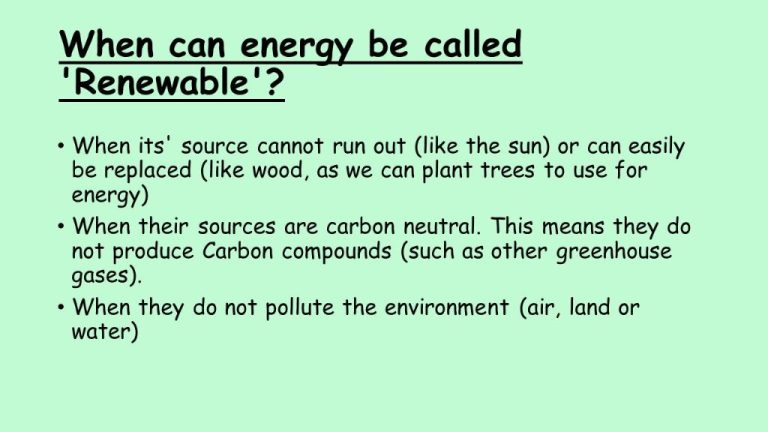What Renewable Energy Can Replace Nuclear Energy?

Nuclear energy has been an important source of energy for many countries around the world for decades. Nuclear power plants provided 10% of the world’s electricity in 2018. Some of the key benefits of nuclear energy are that it produces low carbon electricity, has a high energy density, and provides steady baseload power not subject to fluctuations like solar and wind power. However, nuclear power also faces some major challenges today. Public concern over safety and radioactive waste is high after disasters like Chernobyl and Fukushima. Nuclear power plants are very capital intensive and slow to build, making the economics challenging. There are also concerns around weapons proliferation and supplying nuclear fuel and waste disposed. Major nations like Germany, France, South Korea and the United States are aiming to reduce reliance on nuclear power. Finding renewable energy sources that can reliably replace nuclear’s baseload capacity is a key challenge today.
In this article, we will examine the leading renewable energy sources that have the potential to replace nuclear power and meet the world’s growing energy needs in a clean and sustainable way. We will look at the advantages and disadvantages of solar, wind, hydropower, geothermal and bioenergy as potential replacements for nuclear energy. Understanding the costs, scalability and reliability of these options can inform the energy policy decisions countries will make in the coming decades.
Solar Power
Solar photovoltaic (PV) panels convert sunlight directly into electricity using semiconducting materials. PV panels are made up of many solar cells containing photovoltaic material, most commonly silicon. When sunlight hits the cells, electrons are knocked loose from their atoms, allowing electricity to flow. This process of converting light (photons) to electricity (voltage) is called the photovoltaic effect.
Global solar PV capacity has expanded rapidly in recent years. According to the International Energy Agency (IEA), global solar PV investments increased by over 20% in 2022 to surpass $320 billion, marking another record year.1 Statista reports that global cumulative installed solar PV capacity reached 1,177 gigawatts in 2022, with about 239 gigawatts of new PV capacity installed that year.2 With costs continuing to fall, solar PV is becoming increasingly competitive with conventional power sources in many markets.
Wind Power
Wind power is one of the fastest growing renewable energy sources in the world. As of 2020, global wind power capacity reached 743 GW, led by China, the United States, Germany, India and Spain as the top 5 countries (Source). Both onshore and offshore wind farms contribute to wind energy production.
Onshore wind refers to wind turbines installed on land, while offshore wind turbines are installed in bodies of water like oceans and lakes. In 2020, onshore wind accounted for 93% of total global wind power capacity. However, offshore wind is growing rapidly due to stronger and more consistent winds offshore as well as larger available spaces for building large-scale wind farms (Source).
Wind power is one of the most promising renewable energy sources to replace nuclear power due to its scalability, falling costs and low environmental impact. With appropriate investments and policies, wind energy deployment can grow substantially in the coming decades.
Hydropower
Hydropower is one of the most widely used renewable energy sources globally. As of 2022, global hydropower installed capacity was estimated at 1,374 gigawatts (GW), with China leading at 356 GW, according to Statista. Two main types of hydropower systems exist: run-of-river and dam-based.
Run-of-river hydro plants harness the natural flow of a river to generate electricity, without the need for large reservoirs. They have relatively low environmental impact compared to dams. However, generation is dependent on seasonal river flows. Run-of-river accounted for over 25% of global hydro capacity additions between 2015-2020, according to the International Energy Agency.
In contrast, dam-based hydropower relies on reservoirs to store water, providing more flexibility in generation. However, large dam construction often causes environmental issues like habitat destruction and methane emissions from flooded vegetation. Many major dam projects are underway, especially in developing countries. Construction costs and public opposition make large dams less feasible in some regions.
Geothermal
Geothermal energy comes from the natural heat within the earth and can be harnessed in two main ways – for direct heating uses and for electricity generation. Geothermal resources require access to high subsurface temperatures, which are found in certain locations around the world where geological conditions allow the earth’s internal heat to get close to the surface.
Global installed capacity for direct use of geothermal energy is approximately 485 megawatts thermal (MWth) as of 2020. Direct applications include geothermal heat pumps, district heating systems, greenhouses, industrial processes and more. The countries with the most geothermal direct use capacity are China, Turkey, Iceland, Japan and Hungary.1
For electricity generation, global geothermal capacity is around 15 gigawatts (GW) as of 2022 and rising gradually each year. However, this still accounts for only 0.5% of total global renewable energy capacity. The countries with the most geothermal power generation are the United States, Indonesia, Turkey, New Zealand, Mexico, Italy, Iceland, Kenya and Philippines.2 While geothermal resources are somewhat geographically limited, improved technology could allow increased access to geothermal energy in more locations worldwide.
Bioenergy
Bioenergy refers to renewable energy derived from organic matter, known as biomass. There are several types of bioenergy, including:
Biomass – This involves burning wood, plants, or other organic waste to generate electricity or heat. Biomass is a versatile renewable resource that can be used for power generation, heating, and transportation fuels.
According to the 2012 AREVA Reference Document, biomass power capacity is expected to grow by 6.8 GW per year worldwide from 2011-2015. There is significant potential to harness biomass for energy, especially from agricultural and forestry residues.
Biogas – Organic matter such as manure, food scraps, and sewage can decompose in an anaerobic digester to produce biogas, which is primarily methane. This biogas can be used to generate electricity and heat. There is growing use of biogas at wastewater treatment plants, landfills, and farms.
Biofuels – These are fuels derived from biomass feedstocks like corn, soybeans, and sugarcane. Common biofuels include ethanol and biodiesel, which can replace gasoline and diesel in vehicles. However, large-scale biofuels production may compete with food crops for land use.
In summary, bioenergy has significant potential to replace nuclear energy through renewable sources such as biomass, biogas, and biofuels. Proper policies and incentives can help scale up bioenergy while addressing sustainability concerns.
Energy Storage
Energy storage will be crucial for enabling greater adoption of renewable energy like solar and wind power, which can fluctuate based on weather and time of day. Grid energy storage capacity was around 8,500 gigawatt-hours globally in 2020, accounting for over 90% of total global electricity storage according to the International Energy Agency [1]. Energy storage helps maintain grid stability and reliability by storing excess renewable energy when supply exceeds demand, and discharging it when demand rises.
Lithium-ion batteries currently dominate the global storage capacity, thanks to rapid cost declines. The United States is expected to see battery storage capacity increase from 1.5 gigawatts in 2020 to 30 gigawatts in 2025 according to the U.S. Energy Information Administration, a massive increase [2]. Pumped hydro storage and hydrogen storage are other promising large-scale storage solutions. Pumped hydro accounts for around 95% of current utility-scale energy storage in the U.S., using reversible pump-turbines and two water reservoirs at different elevations [3]. Hydrogen produced from renewable electricity can also be stored and used in fuel cells to generate electricity on demand.
Transmission Infrastructure
The variability of renewable energy such as solar and wind requires major upgrades to transmission infrastructure in order to integrate large amounts of these resources onto the grid. According to The Cost of Upgrading Electricity Transmission from the American Action Forum, the capital costs for these upgrades are estimated between $314 billion and $504 billion (https://www.americanactionforum.org/research/the-cost-of-upgrading-electricity-transmission/). Upgrades are needed to transmit power from areas with the best renewable resources to population centers that need the electricity.
As renewables make up a larger percentage of generation, congestion and curtailment issues arise when transmission capacity is insufficient. An S&P Global analysis found costs related to these issues are rising, with an estimated $2.5 trillion needed for grid upgrades by 2035 (https://www.spglobal.com/marketintelligence/en/news-insights/research/curtailment-congestion-costs-rise-as-transmission-upgrades-lag-renewable-growth). Major investments in high-voltage transmission lines, energy storage, and smart grid technologies will be required to take full advantage of renewable energy potential.
Cost Comparisons
When comparing the costs of nuclear power to renewable energy sources like solar and wind power, one metric often used is the levelized cost of energy (LCOE). The LCOE represents the average cost per unit of electricity generated over the lifetime of a power plant. According to analysis by Lazard, the estimated LCOE for nuclear power plants ranges from $118-192 per MWh. In comparison, the LCOE for utility-scale solar PV is $26-44 per MWh, while the LCOE for onshore wind is $26-50 per MWh (Source 1). So the LCOE for renewable sources like solar and wind tend to be significantly lower than nuclear.
One report found that over the past five years, the LCOE for nuclear electricity increased by 39%, while renewables became the cheapest option. In 2021, the global weighted average LCOE for nuclear was $155/MWh, compared to $50/MWh for onshore wind and $55/MWh for solar PV (Source 2). Another analysis noted that nuclear plants have an average LCOE around $175/MWh, while solar and wind are around $40/MWh (Source 3). So multiple sources show that nuclear tends to be significantly more expensive than renewables in terms of levelized costs.
Conclusion
There are several renewable energy sources that have the potential to replace nuclear power and meet our energy needs. Wind, solar, hydropower, geothermal and bioenergy are all rapidly scaling up and becoming cost-competitive with fossil fuels and nuclear. With the right investments and policies, a transition to 100% renewable energy is feasible within the next few decades.
The outlook for renewable energy is positive as costs continue to fall and new technologies emerge. Energy storage and transmission infrastructure improvements will help integrate higher shares of renewables onto the grid. While there are still challenges ahead, the technology exists today for renewables to replace nuclear and other conventional sources of electricity generation. With the willpower and cooperation of policymakers, businesses, and the public, we can build a carbon-free energy system based on renewables.






